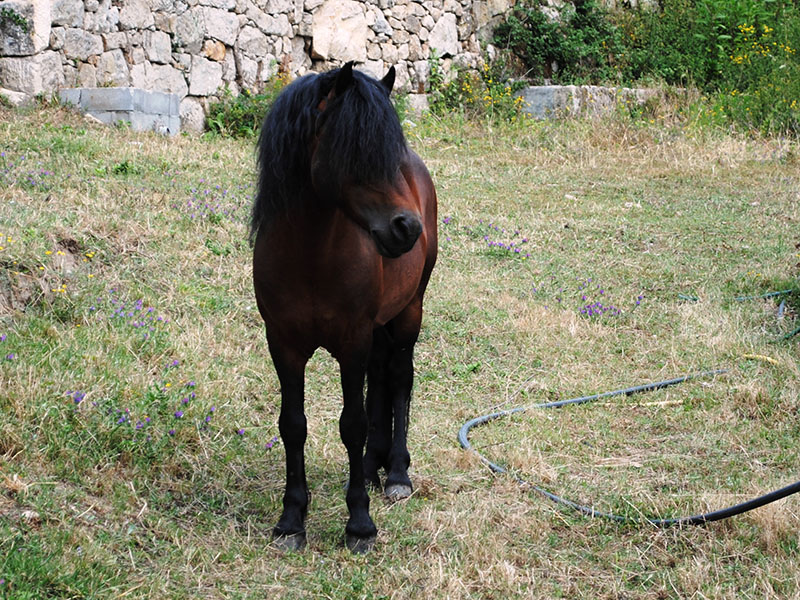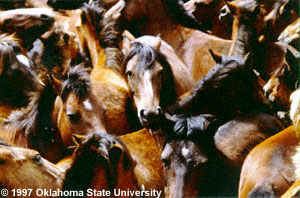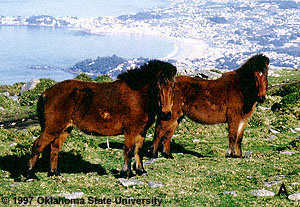Galician Pony
Also Known By: Faca galizana, Jaca gallega, Poney gallego, Poni galaga
The Galician Pony is found in Galicia, in the northwest of Spain. This is a region with a very wet climate and numerous low mountains. This breed is used for meat production and for riding. Its size is between that of a pony and a normal horse. These animals are very rugged and hardy. A herd 0book was formed in 1994. This breed was used in the development of the Galiceño.
According to the 1973 study by Pedro Iglesias there were more than 20,000 Galician ponies free in the mountains in the northwestern region of Spain. However, it is thought that this number has decreased because of sanitary problems and low economic returns.
The Galician Pony belongs to a wide family of ponies which live on the Atlantic coastal area from Portugal to Scotland. In the past, the main use of this animal was the hair of the mane and tail used to make different kinds of brushes. Today synthetic fibers have replaced this natural material and meat production is the principal production destination.
The Galician Pony is a mix of Celtic horses, Roman horses and horses brought to Spain by the Suevos. More recently they have crossbred with other breeds. It is short-bodied and strong-legged. Despite their ethnic heterogeneity (three types of Galician ponies can be found in different parts of Galicia) the main characteristics are its straight profile, linear proportions, height of between 1.20 and 1.30 meters, and a chestnut coat. An interesting characteristic of one of the three types is the long mustache which appears on the upper lips of the older mares.
In addition to meat production, they have a tourist value. One of the most traditional and popular festivals in Galicia is the "curros." * This festival consists in getting the semi-wild horses from the Galician mountains once a year, usually in summer, to brand, cut their manes and tails and sell them in the "curro." In this fair everyone participates in bringing the horses to the "curro." Afterward people buy some of the horses and the rest are set free again. This festival attracts a lot of tourists and generates financial resources for the region. *The "curro" is a closed area where the horses are exhibited during the fair.
References
Mason, I.L. 1996. A World Dictionary of Livestock Breeds, Types and Varieties. Fourth Edition. C.A.B International. 273 pp.
Email of information provided by Fernando Bianchi, Jorge Castro, Manuel Angel Carracedo and Manual Domínguez, Manuel Ferreira, Pilar Cachaldora, Enrique Taboada, Anayansi López, Spain.



